Magical Book Club — Going Deep (10k-4k)
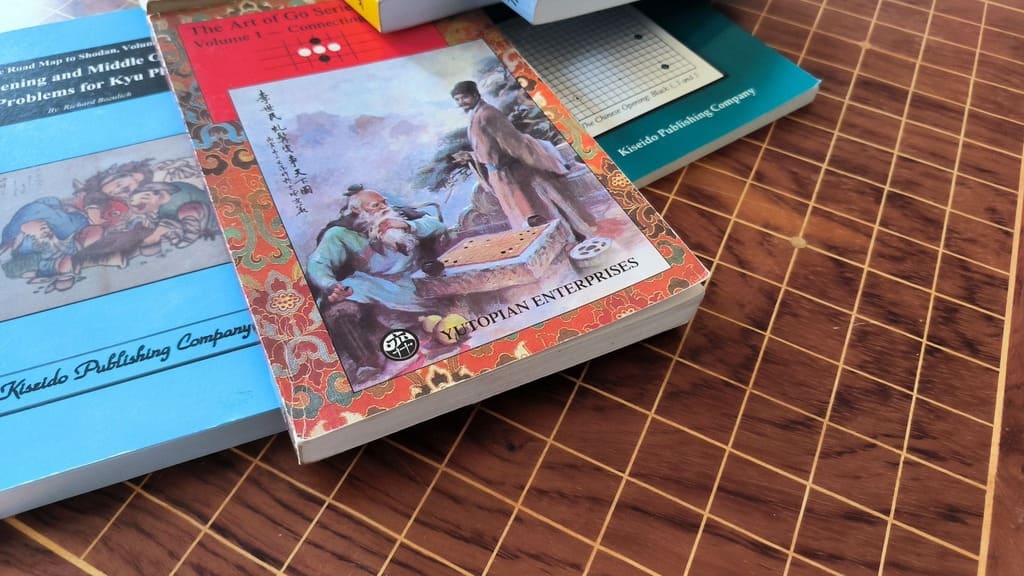

So you have mastered the art of the empty triangle, endured a thousand deaths by monkey jumps and unlocked more wisdom after laddering yourself into a self Atari and you rightfully ask yourself “What comes next?”. Everyone’s Go journey is different, but even then I think most people will benefit from trying a varied set of approaches. After having gained insight into a vast array of topics to climb up the DDK ranks, you are now more than ready to delve into more in-depth topics. If you haven’t reached 10 kyu yet, it is still worth experimenting with these topics a bit to see what suits you, but if it is too daunting, don’t hesitate to take a step back again and come back when you are ready. Books are patient. They will wait for you.

During your double digit kyu days, you will likely not have developed a specific style yet. More likely, you will have experimented with some Sanrensei, some 4-3 openings, some different joseki here or there, but most of the stuff taught to DDK players eventually made it to your mind. This will very likely now start to change. Some topics will come very easy to you, others will take a lot of effort to master. Do you frolic at the idea of keeping multiple different 3/4ths of a point in mind or do you enjoy the comfy confines of a well structured and predictable opening? Or perhaps you revel in the blood, sweat and tears of a maniacally crazy fight all across the board. Now it is time to put that to the test and pick your topics of research carefully and figure out how much you really want to go down that path.
To that end, without further ado, more topics and book recommendations to dive in deep and find which tools in a Go players arsenal suit you best!
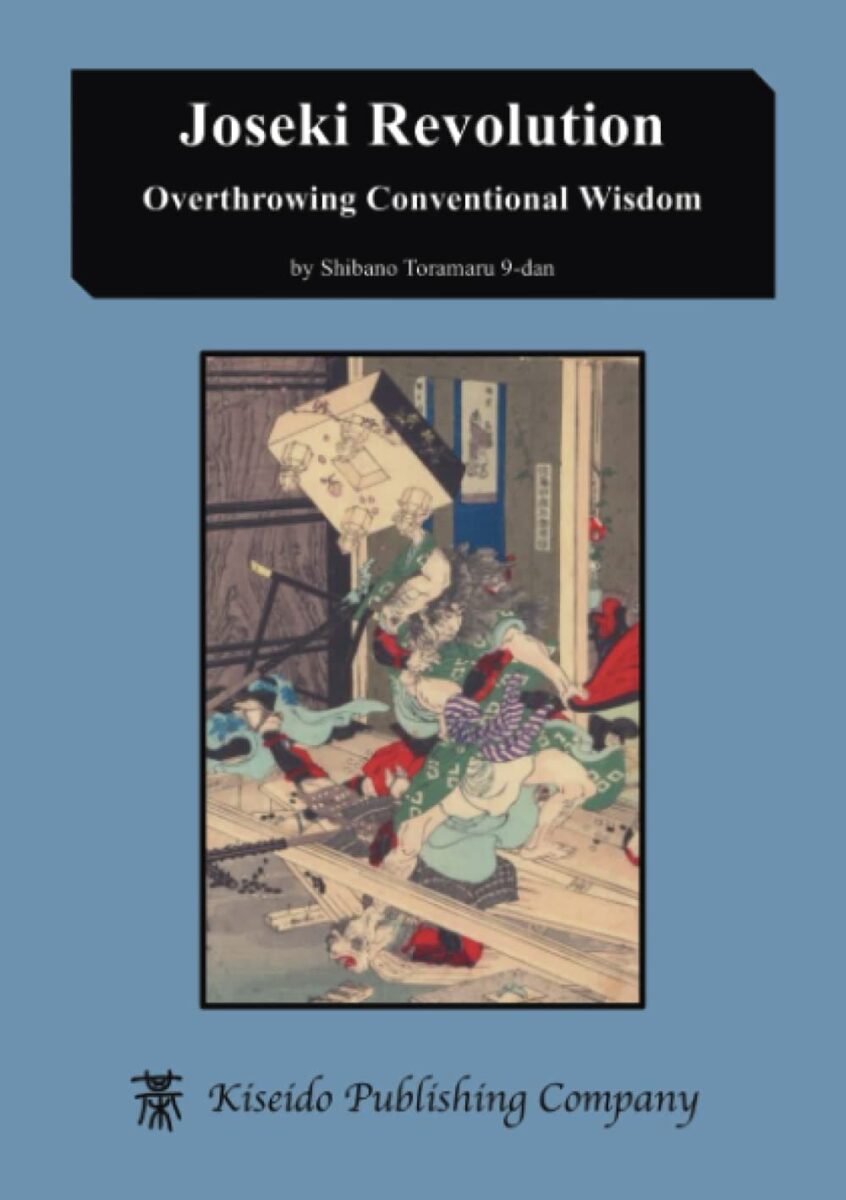
by Shibano Toramaru
“Nowadays, Go is evolving day by day, hour by hour. Keeping up with this rapid pace is tiring, even for us professionals. I think it must be even tougher for amateurs, but I hope this book can be of some use to you.”
Why Joseki?
Off to a great start with my favourite topic: Openings and Joseki! When teaching Joseki to DDK players, we often tend to not explain point accurate optimal Joseki variations and their uses. Most of the time it’s more a matter of practicality. “Which Joseki choices will let a learner avoid the most trouble and be reasonably quick to learn?” And honestly, you could just keep playing the same Joseki over and over and it would not hinder your progress too much if you improve in other areas. But what if you could judge how a different Joseki choice leads to entirely different games, one more likely to suit you then the other and you get to pick? What if Joseki choices could improve your points in every corner, so that you start every game with a plus 10 point head start after the opening? That is the magic of the opening.
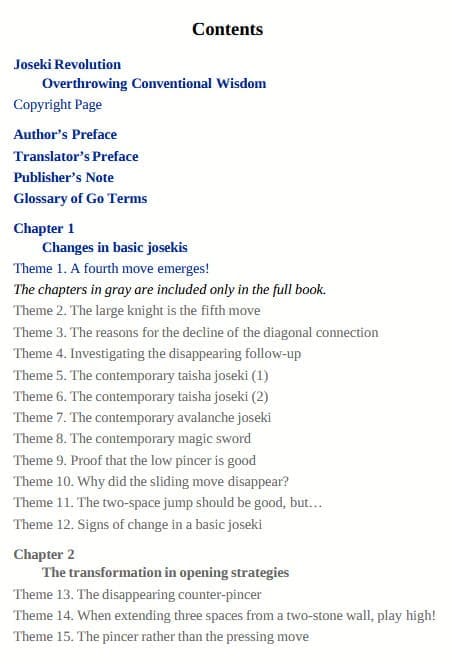
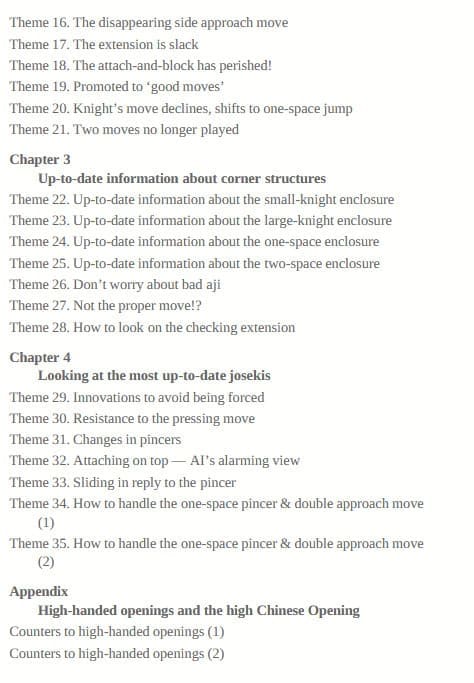
The Book
Many of the classic Joseki compendiums are a bit outdated, and sometimes very complex with very intricate solution trees. They are still worth perusing for inspiration or for learning variations other players might not be aware of of course, but AI came along and simplified a lot of the complex variations, offered new and more optimized choices for existing Joseki, validated outdated Joseki that nobody was playing anymore and allowed the invention of entirely new Joseki.
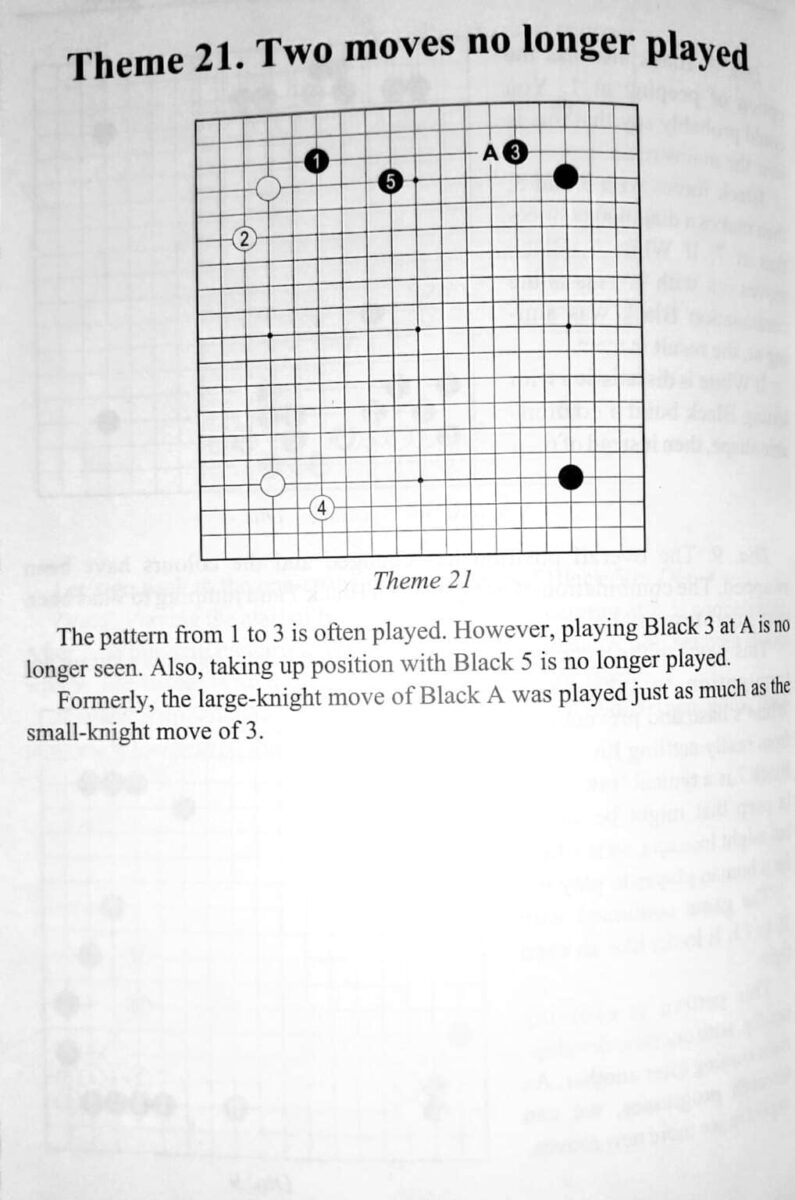

This is what this book is about, getting a feel for how Joseki work nowadays and how they are being optimized, while still keeping it somewhat easy to digest with diagrams that are usually only 5 to 12 moves long. The first chapter goes into explaining changes to easy and common Joseki, while also explaining innovations to infamously challenging Joseki like the Taisha and Magic Sword Joseki. It feels a bit odd that the book is starting with Joseki that most people will just want to skip anyway, but if you stay with the book, you will be greatly rewarded, when, in the later chapters, more common shapes are being discussed like the current state of small knight and large knight enclosures in the corner and how to approach/treat them in the most optimal way. This is not the most structured learners book, but it is a very up to date explanation of why some Joseki are not considered optimal anymore and how the appearance of AI shifted our focus and possibilities in the opening and as such gives you a definitive edge over players your strength, who are not researching optimal corner variations.
You might already be reviewing your own games with AI and learning some new variations occasionally. That is a very good approach! This book will give that a new foundation, explaining overarching concepts of why we pick Joseki and how Joseki should steer our games, making your post game AI review discoveries all the more valuable. Also a quick shoutout to the companion book “Fuseki Revolution”; which explains how we judge game progression properly according to AI. Both are fantastic books.
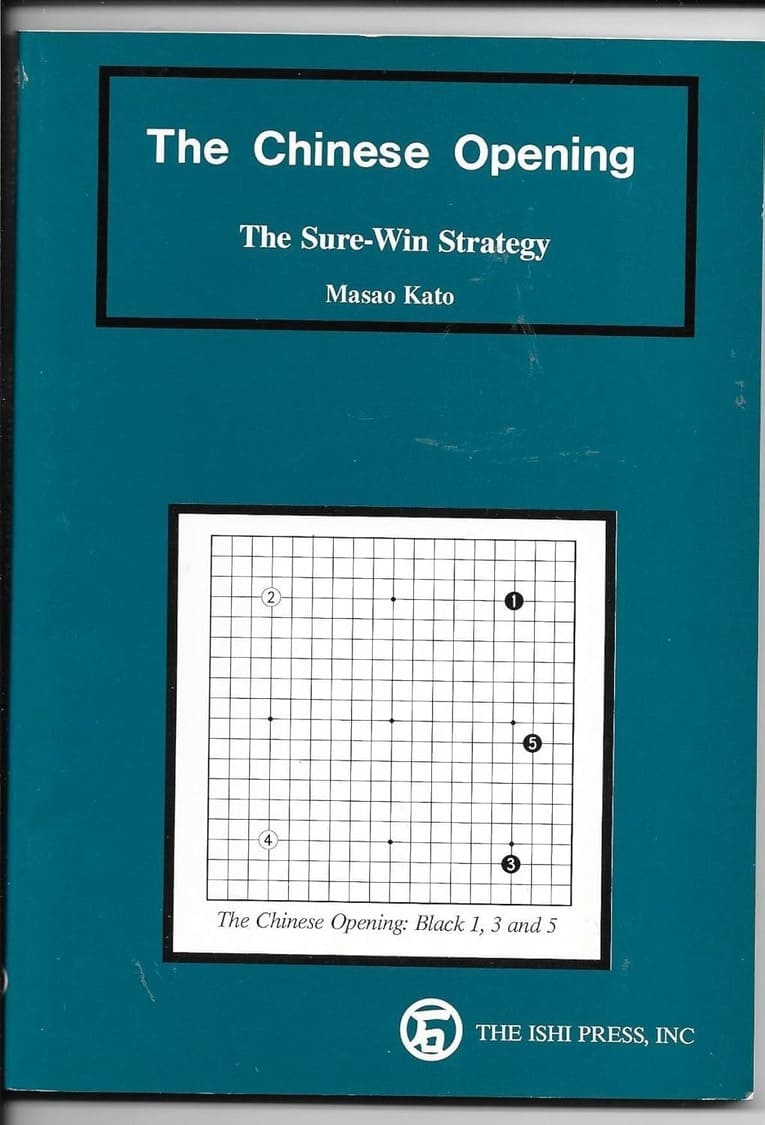
by Masao Kato
“The Chinese Fuseki is not just a passing fad; it is sure to take its place alongside traditional patterns such as sanrensei and the Shusaku fuseki as part of the classic Go opening repertoire”
Why a classic opening like the Chinese Opening?
The attentive reader might notice the juxtaposition of my first book recommendation being AI Joseki and openings that optimize what came before, while this one is a book written in 1989, surely now outdated after the advent of AI. Right after the appearance of AI, these types of openings indeed fell a bit off, as AI considered them suboptimal. However, even professional players are finding ways to make it work again now and to be entirely honest, half a point less in the opening is barely worth mentioning for amateur players, if you get more structure in return, with which you can reliably learn how to use your stones to attack, build and defend. There are other books on different openings, most notably Michael Redmond’s Patterns of the Sanrensei, but rarely is it as entry friendly by focussing on important concepts as Kato did in this book.
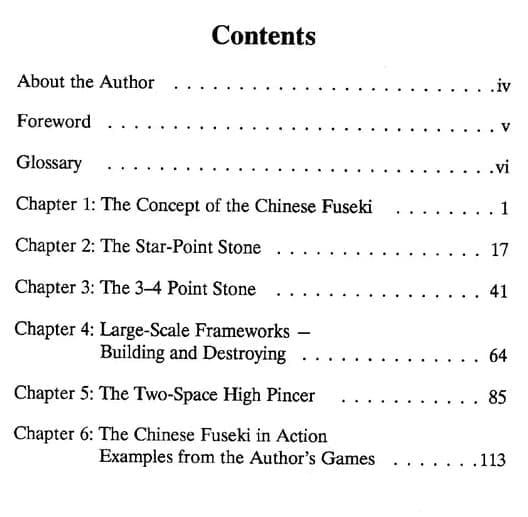
The Book
Cheekily subtitled “The Sure-Win Strategy”, this book contains everything you need to grow your understanding of a whole board strategy for the Chinese Opening and coming fresh off the DDK ranks, this step is a massive undertaking. Up until now, your opponents most likely did very unpredictable and random things and the idea of steering your opponent into the moves you want them to play likely feels very alien to you, but what if you could steer your opponents moves and know how to react to them? From the very first diagram, Kato shows us common situations arising, what they mean, how they affect our strategic goals and casually gives any reader a valuable blueprint on how to approach and learn other opening styles in the future.
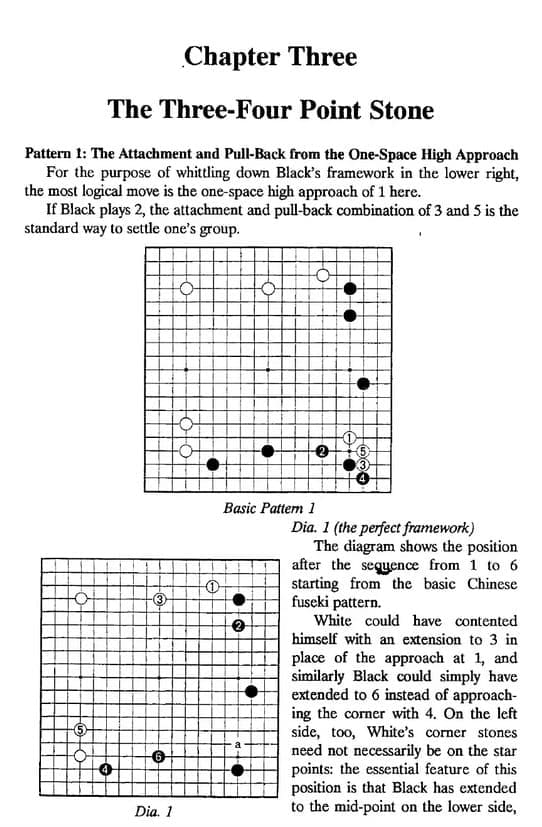
The first chapter explains the basic idea of the opening, while the following chapters delve into very understandable overviews of the most likely approaches most Go players tend to take. Will they approach from the outside? Inside? Loose reduction on the fourth line? All of these possibilities will be accounted for and as such give you a very concise playbook to improve by. The next part might be even more valuable, as Kato uses the foundations for an opening development to talk about how to use and approach influence, giving many examples of shapes and concepts that can be used to build or reduce moyos, leading you on a guided tour throughout the opening all the way through midgame, if you decide to follow his approach. Top it off with some good problems to test your understanding of the concepts and some very cool and illustrative real game examples by the author, and it’s a bit of a marvel how much of a punch and new concepts this book can pack for a learner traversing the SDK ranks, by focussing on a very specific subset of playstyles.
Even if you don’t contemplate the Chinese opening a prime candidate to play yourself, this book will teach you how openings work, what to focus on when developing your play style with your own preferred openings and obviously also gives you some tools against others using the Chinese opening, but I would generally highly recommend finding at least one specific opening that you have a book/teacher for and dig yourself in deep. You won’t regret it.
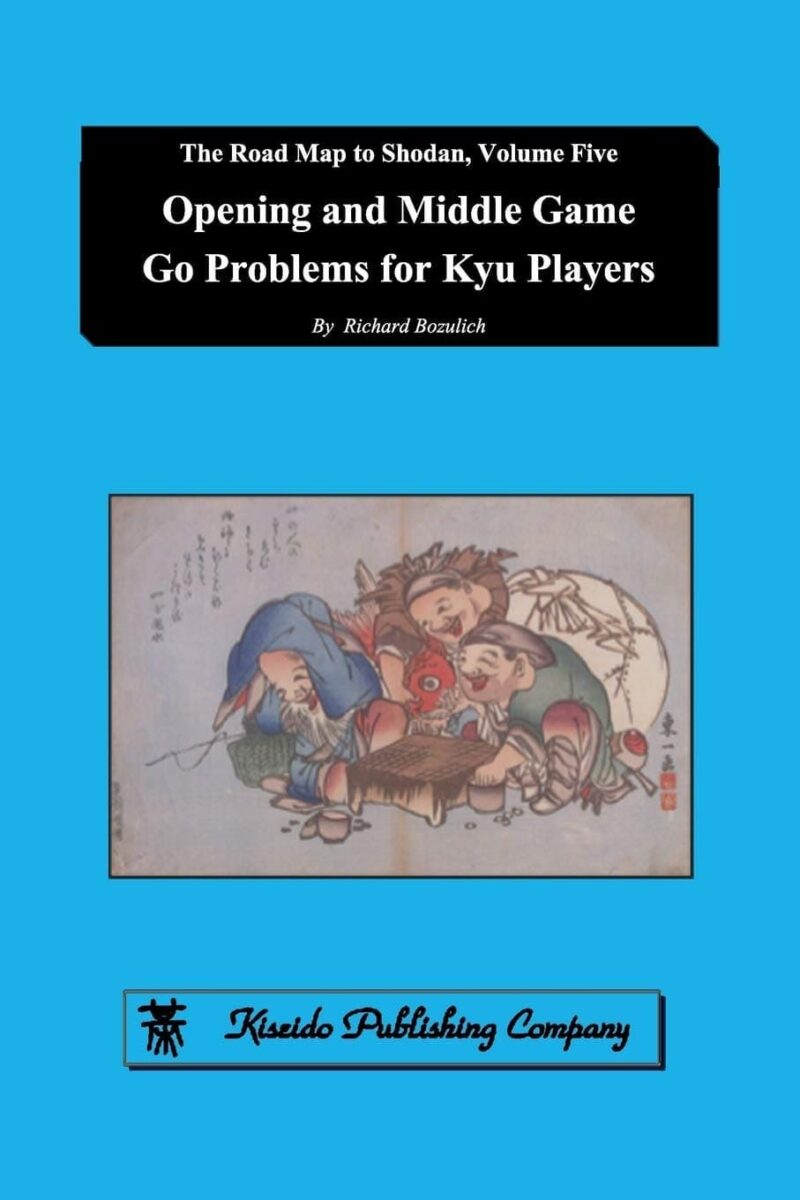
by Richard Bozulich

by Wu Piao & Yu Xing
“The concept of connecting stones is crucial in the game of Go. As a player discovers how to connect, he or she will naturally learn how to cut the opponent’s stones apart as well.”
Why Tsumego/Tesuji problems?
Whenever I asked a stronger player how to get better at Go, I typically got the same response: “Do Tsumego”. It is absolutely true that doing a lot of Tsumego will increase your play strength, but mindlessly repeating Tsumego is also not a thing everyone enjoys equally. Over the years, I noticed that Go problem connections can be wildly different in the way they structure their learning however, and as such, I would heartily recommend these two books for the reasons described below.
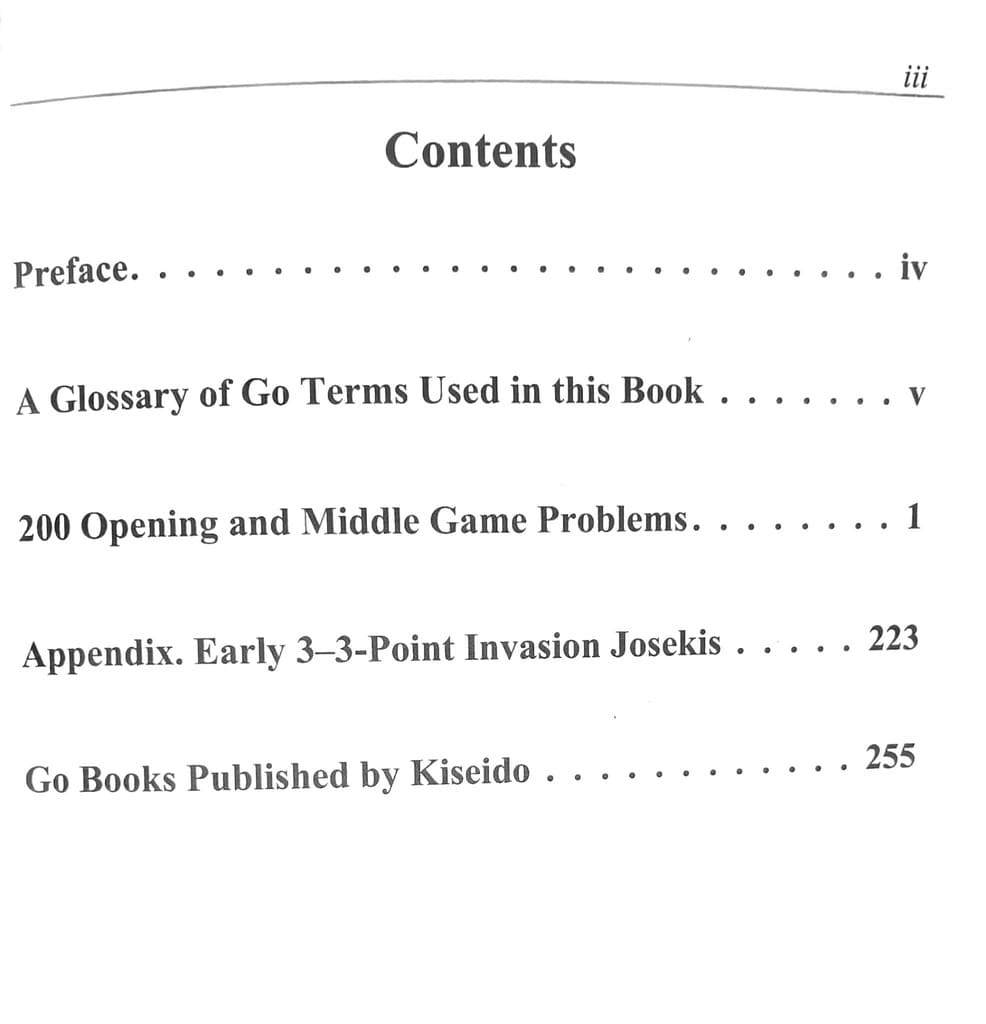
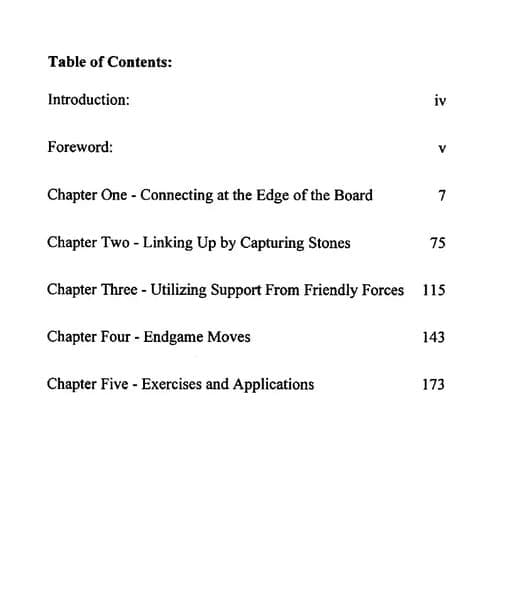
The Books
Both of these books start with a very basic understanding of their concepts. How to connect stones in seemingly impossible circumstances or questions about opening and middle game concepts, then gradually increase in difficulty. The middle game problems in particular are exceedingly rare in most Go problem books, making this a very valuable insight. Having a structured and thorough approach that guides you from a 15k understanding of the concepts all the way to a 1k challenge level allows you to really dig in deep with their individual concept and gain significant play strength. With enough repetition and curious and memorable solutions, you are unlikely to forget a large part of these learnings. Depending on your preference (in this case opening or stone connections/fights), you will probably find one topic much easier to learn than the other for you personally, and that is perfectly fine, so just pick what interests you and go nuts. I noticed that the more specific Go books tend to be, the more I like their learnings and variations. Another recommendation along those lines would be Nakayama’s “Magic on the first Line”.
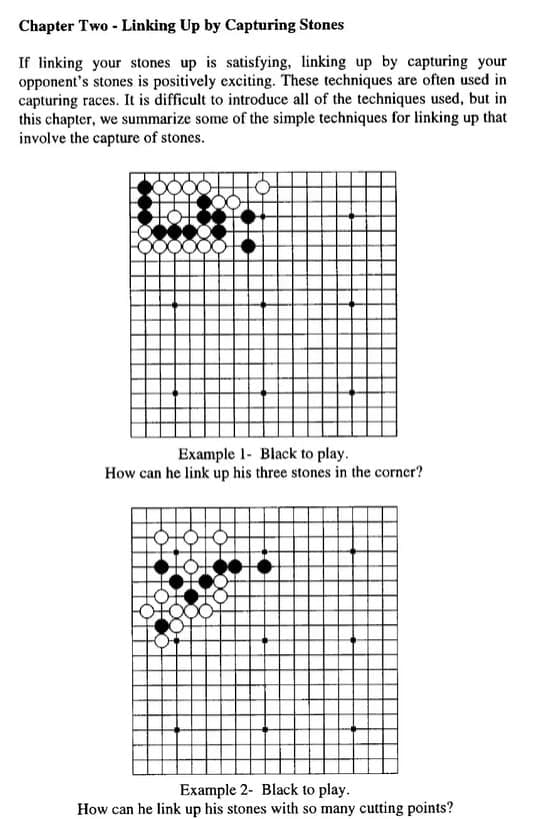
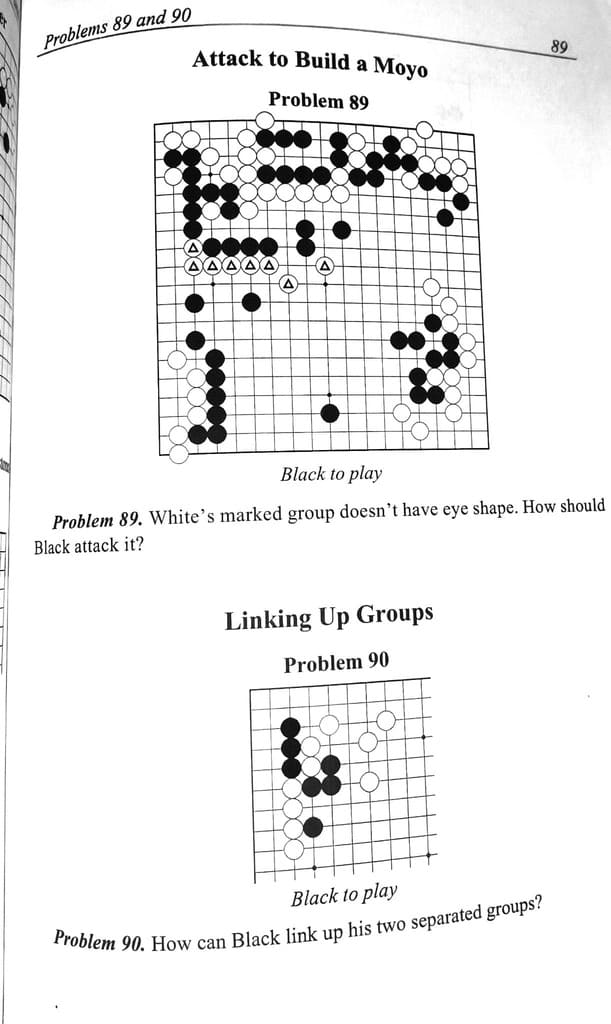
As an additional bonus to the opening problems, Bozulich’s book contains a bonus chapter on modern 3-3 invasion patterns, which by itself is already very valuable input, that rounds out the book nicely. While the Art of Go series might not be as easily available anymore, I still wanted to include it here as a shining example of how very well structured classical tsumego books can be. If you prefer Go problems digitally, you can also check out many other Go books in their intended sequence on Tsumego-hero.com.
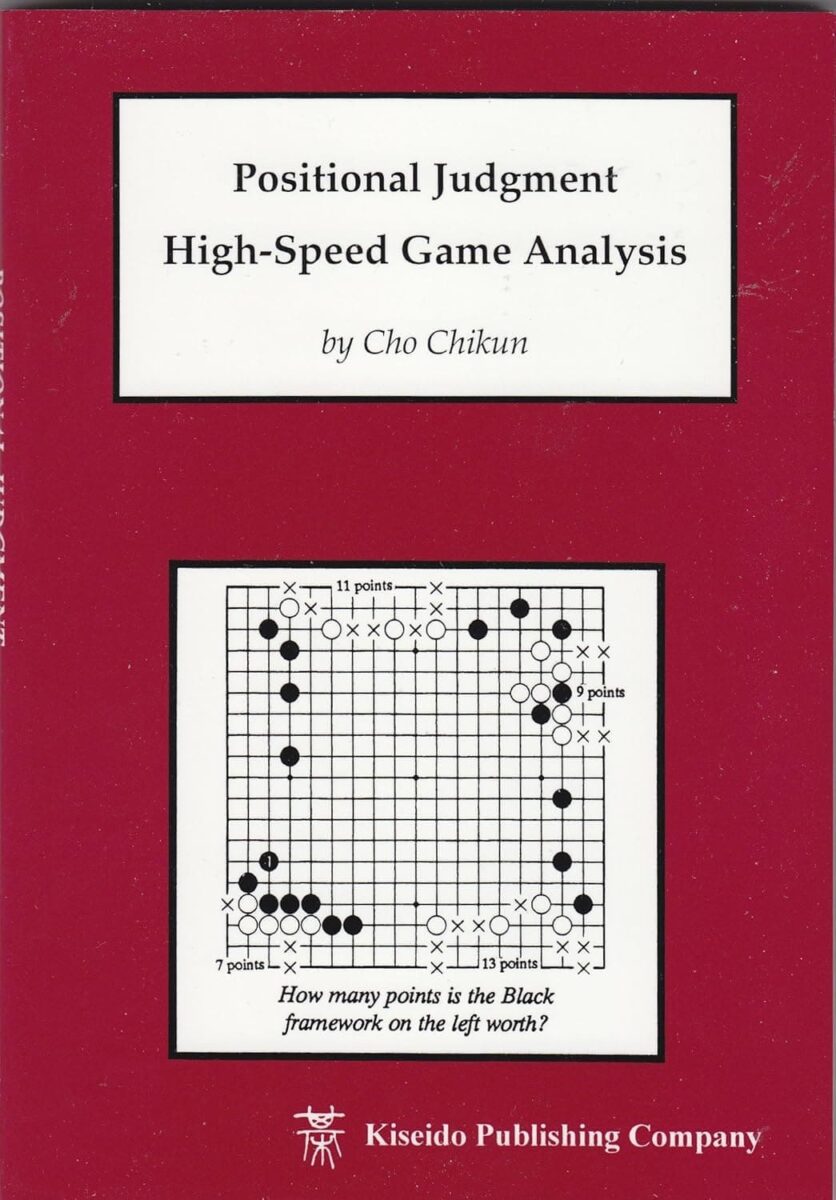
by Cho Chikun
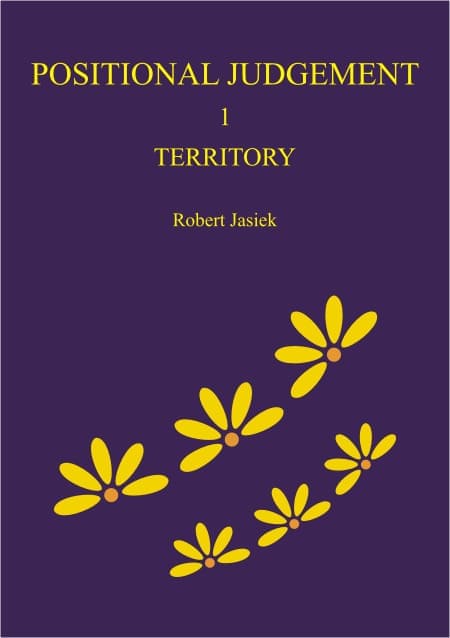
by Robert Jasiek
“Good judgment in the opening, during middle game fighting or when entering the endgame should in every case enable you to make the right choice of move on the road to victory.”
Why Positional Judgment?
Positional judgment refers to the ability to look at the game and figure out the approximate state of the game. Who is ahead and by how much? How do I count thickness or a moyo? This is one of the very few important superpowers that most amateur Go players do not have a good grasp on, giving you a massive advantage by knowing when to play defensively, when to play offensively or when you can just continue in a balanced and stable manner. Often games come down to attacking too late/too early and there are currently only two books in the english language focussing on this topic, Robert Jasiek’s Positional Judgment, which is very thorough and better suited for someone enjoying a highly analytical approach, and Cho Chikun’s book, which I find more interesting to read and study, but it is also much harder to find.
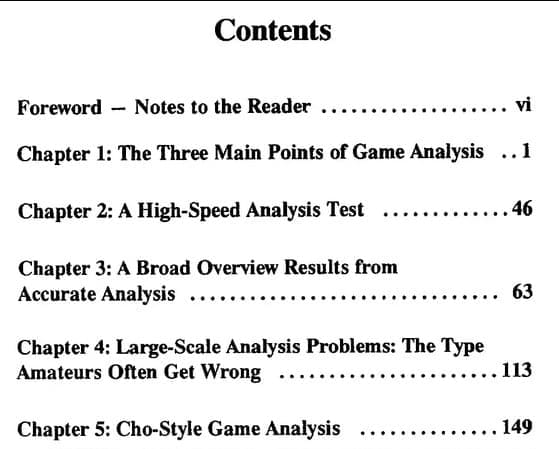
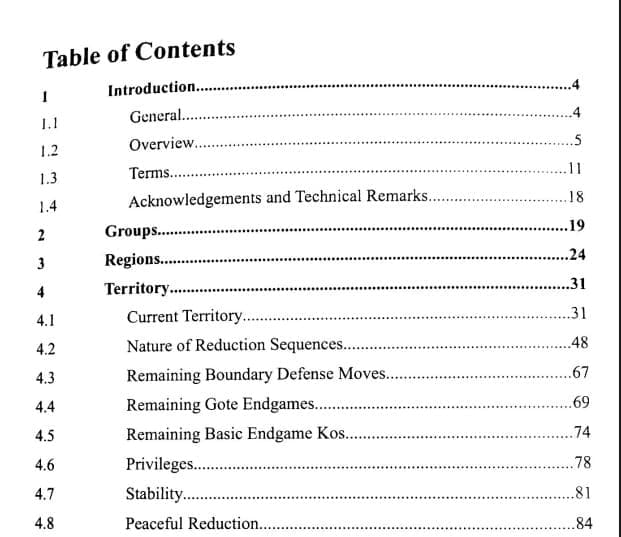
The Book
The first chapter is dedicated to relatively simple concepts that amateur Go players still never really think about. How many points is a 2 space extension? What is a star point worth in territory and how do different types of extensions change an approximate count? It then goes into the process to judge thickness and moyos. It should be noted, that the book assumes the reader already possesses some basic understanding of shapes, endgame sente moves and the like and requires full attention as every single diagram is visualizing a new concept or subtle change to the position that requires a new evaluation. After an interlude chapter on some real game positions, Cho turns things up a notch by informing the reader about how to better judge the position and use the current game count as an overview to inform the next move decisions, instead of counting being relegated to when it’s basically already too late. The book is then topped off with more full game analysis problems and a few games by Cho Chikun, explaining his reasoning for the positional judgment in these positions.

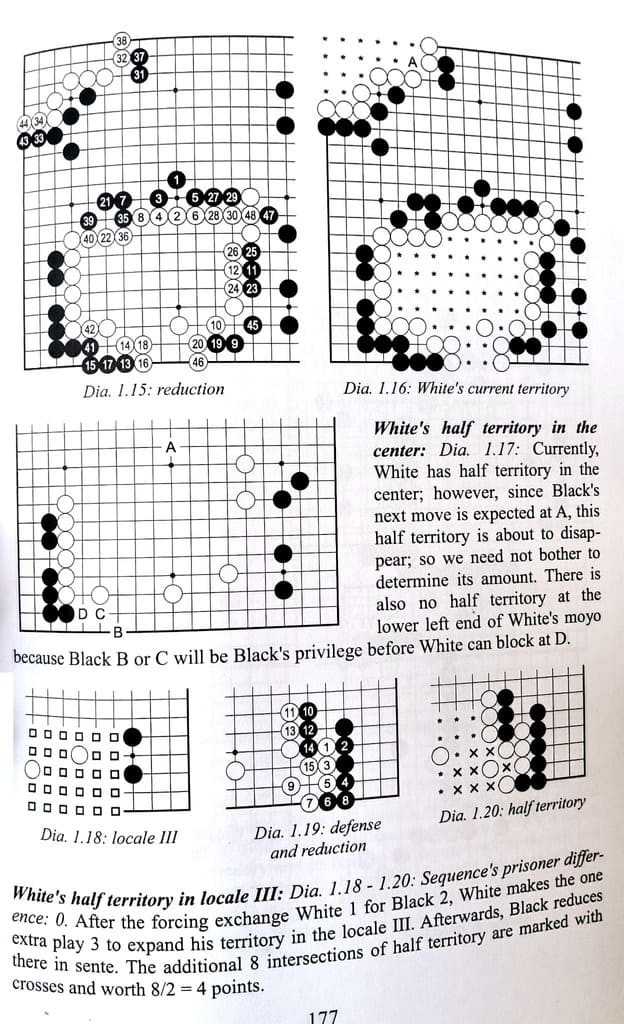
It is not an easy book, or topic for that matter, and no reader should expect to get a clear answer to every one of their questions about positional judgment here, as oftentimes there are multiple ways how a position could be viewed and played out. What this book does exceptionally well however, is giving a birds eye view on the strategic component, giving examples of how certain shapes and moves can affect counting, what to build on and what sacrifices one needs to make in trying to get to a rough “high-speed” estimate. Sometimes a simple sentence such as “this shape shouldn’t be expected to fully turn into territory”, might warrant further research or AI analysis to understand and that is perfectly fine. Cho Chikun’s book is a study book, not a light read, but through that, you are guaranteed to come out more knowledgeable after having read it with long lasting learnings.
Robert Jasiek’s book Positional Judgment Territory, also deserves another mention here, not only because it’s easier to find, but also because it has a bit of a different focus, explaining the concepts of counting territory that are somewhat taken for granted by Cho Chikun with a vast array of examples to practice those skills. The books are both fantastic in their own right and worth learning from.

by Akira Ishida and James Davies
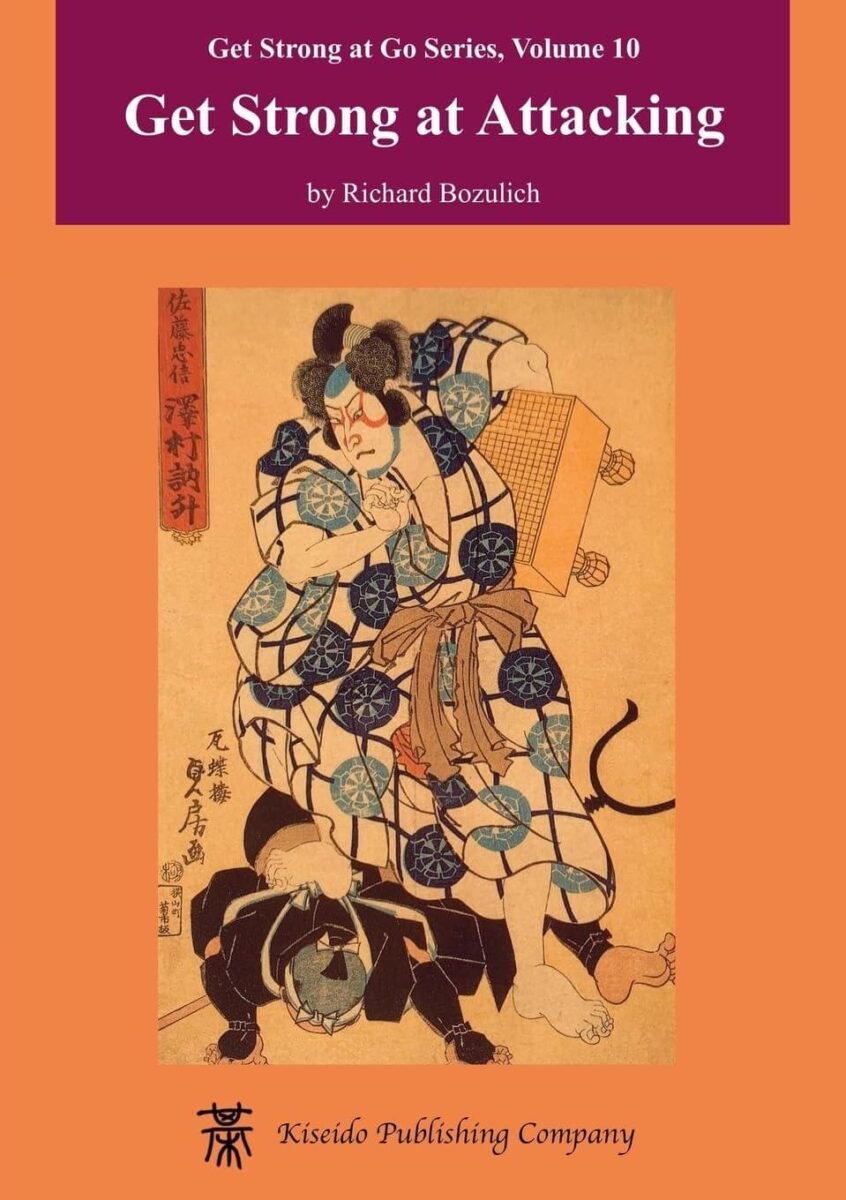
by Richard Bozulich
“Go is a game; you are free to devise your own strategies and play wherever you want. If you win – fine. If you lose – so what? THe more experiments you try, the more interesting the game becomes.”
Why Get Strong at Attack and Defense?
I have just landed in a parallel universe, where I learned that these two books are not in fact, as my mind led me to believe, contained in the same book. These two books so nicely build on each other’s strengths and weaknesses, that it’s hard to not name them in the same breath. Why attacking or defending your stones is important is barely even worth pondering for a second, as the entire game of Go eventually revolves around these concepts. It never stops fascinating me how layered and intricate this topic becomes whenever you just get a bit stronger. New defensive and offensive shapes pop up constantly, allowing you to continuously reevaluate what attacking and defending even means and how you can use it in a match to steer the game progression, even if you do not intend to capture stones, making it the most fundamental Go skill.
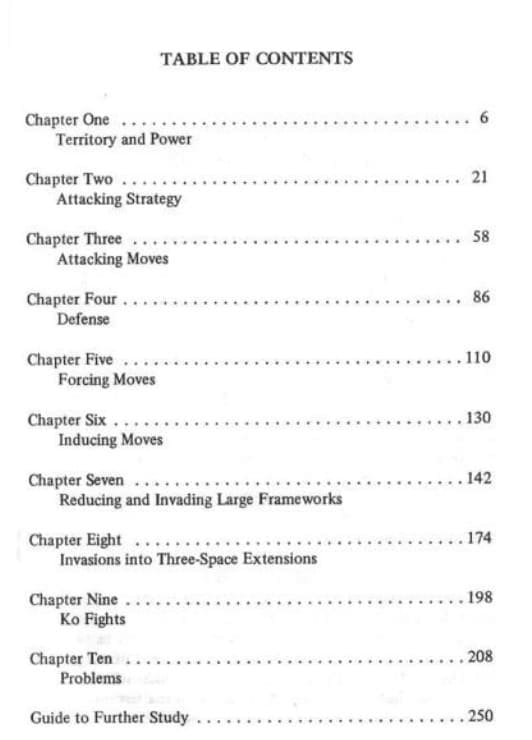
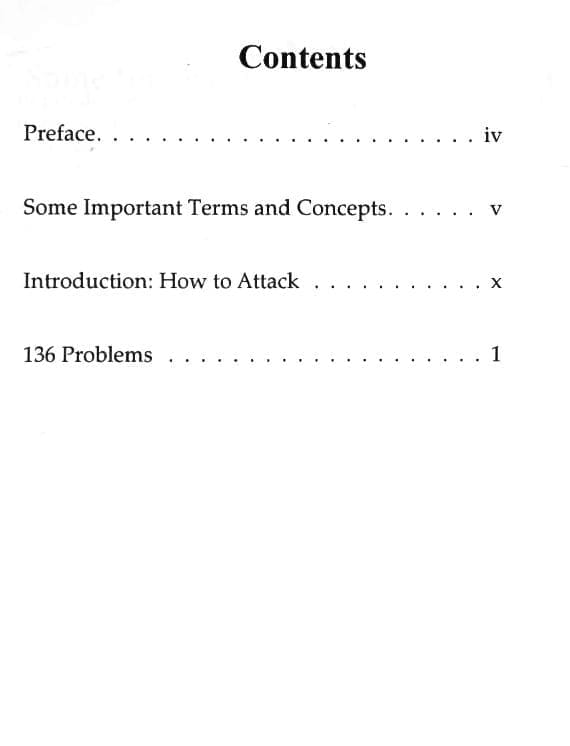
The Books
Attack and Defense by Ishida and Davies is the meat of the topic, as it contains very detailed explanations of the most important strategic and tactical concepts on this topic. The book starts by explaining concepts to judge board positions, such as the balance of territory and balance of power. It then uses these concepts to explain how any decisions can affect these concepts. How does attacking a group for territory shift these balances? How does an invasion or a cut and fight sequence affect the game state?
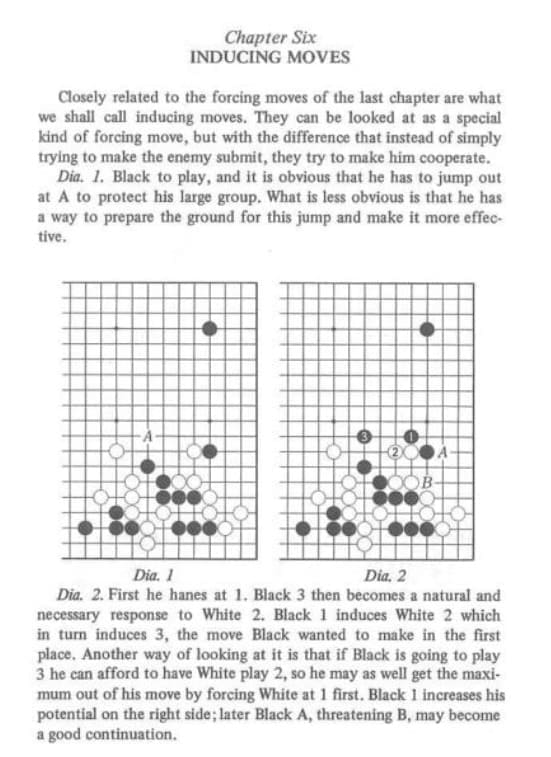
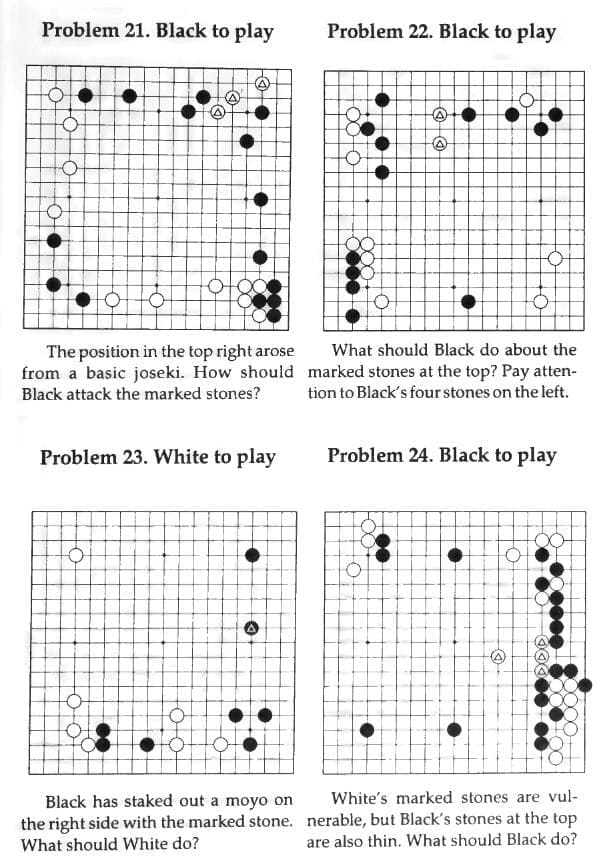
After building a foundation for understanding the shifting powers, the book goes into the main part explaining different attacking concepts under the lens of these power and territory balances. It is one of the first comprehensive books for a learner that covers very specific shapes in attack and defense that are always worth keeping in mind, such as stealing eyes, capping or peeping. On top of relatively simple concepts, the book then also dives into more complex ideas, such as attaching to defend and caps all of these concepts with some problems to reinforce these ideas. The book contains a lot more concepts and if it is the first book you are reading on this topic, it is a lot to wrap your head around and a lot to learn from.
Get Strong at Attacking by Bozulich on the other hand contains only a minor introduction and no deeper structured concepts and is instead a collection of attacking problems based on full board positions. As the book uses very common shapes and positions, it is incredibly valuable to think through these positions and use the concepts in Attack and Defense as guidelines to evaluate potential options. It is hard to overstate how effective this book is at reinforcing the learned concepts, making it a fundamental continued reading and exercise on top of the concepts in Attack and Defense.

by Tomoko Ogawa & James Davies
“Whether you find it easy or hard, one thing can be said about the endgame: it is decisive because it comes last”
Why the Endgame?
The endgame is the most accessible part of the game to get tangible improvement on by learning straightforward concepts and then just… calculating the results. In all the other areas, it is very hard to get concrete answers and to be sure of the optimal moves. In the endgame however, you can learn concrete shapes and point values that will routinely give a player 10 to 30 points as an advantage over your opponent. It is a very mathematical and analytical process that anyone can get better in, by pure and straight forward learning. Any Go player who neglects endgame practice accepts being at an avoidable disadvantage in every single one of his games. One player inevitably will lose points in the endgame, why should that be you?
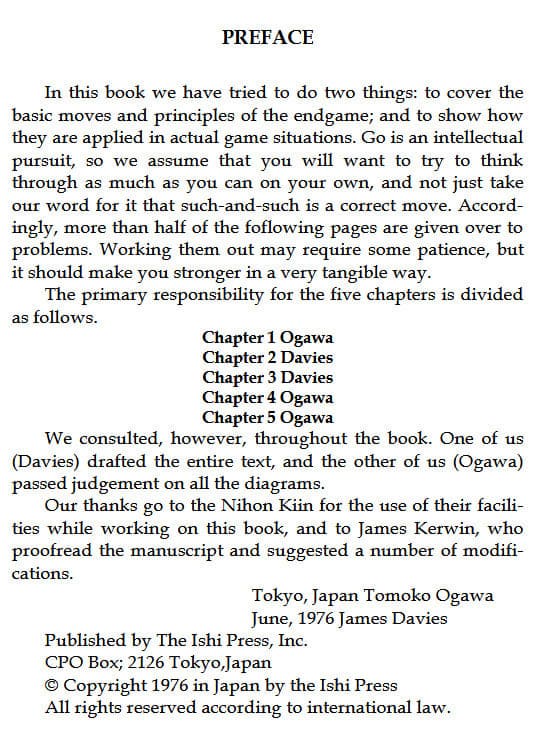
The Book
Considering the impact of the endgame in any given game of Go, it is absolutely mind boggling, that there are only very few books in the english language on that topic. Thankfully, Ogawa and Davies wrote a fundamental book that touches on the most important aspects, while also making sure that the reader receives the context to internalize these learnings.
The book starts with a 40 page long introspection on a full game and how Ogawa viewed the game progress under the context of counting and endgame. Under that lens, it is much easier to understand the importance and application of the concepts explained later in the book. The main part of the book revolves around basic concepts for counting the endgame and fundamental shapes. You will learn how Gote, Sente and Double Sente affect endgame values and how follow up moves affect the value of an endgame move. This part could be a bit more extensive, as it is not wasting time on repeating simpler concepts, in exchange for including a very wide range of problems of common shapes that you will encounter in many games for tangible point advantages. The book contains a thorough explanation for every problem, including the approach to counting and visualizes the value of areas in an easily accessible way.
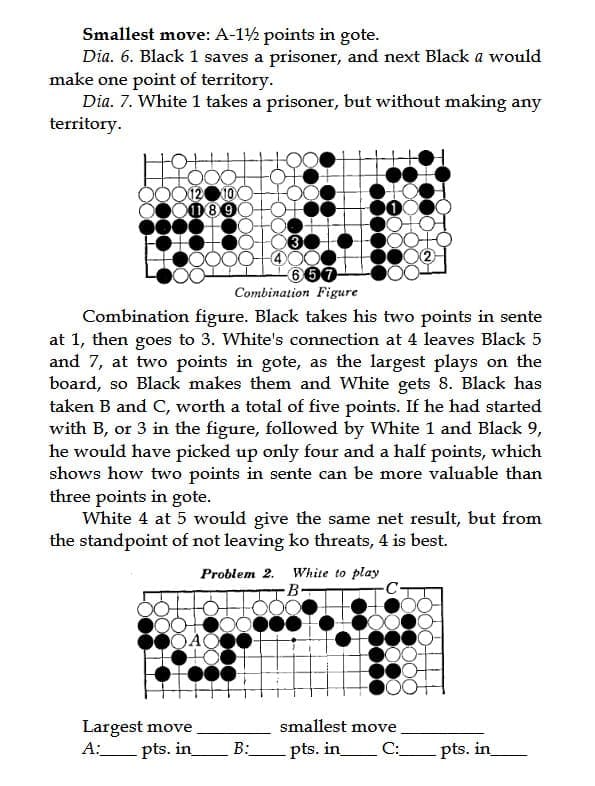
After learning the basics, the most valuable part of the book is probably its extensive collection of endgame tesuji explanations that you will apply and keep in mind every single game for how much value they represent. Monkey jumps, squeezes or vital point tesujis all will teach you skills that gradually improve your game. Following that, the book contains a section called “Macroendgame” containing full board examples, that will show the importance of judging the size of endgame style moves during the midgame,as the true endgame often starts a lot earlier, when a match starts being less about finding complex fights and strategies, and a player is well advised to instead focus on the largest points available on the board. The multi answer problems in this section aim to build an understanding of the value of this concept. and as such ties a nice bow around the topic, making it to date my favourite book on the topic, due to its relatively complete handling of the topic.
Last Words
And that’s it! Realistically, mastering any of these books will already put you high up in the single digit kyu range. So just pick the topic that speaks to you and go nuts! All of these topics are doable on your level, and if you master all of the books on this list, you will already have conquered dan level strength without realizing it. And never forget: despite the somewhat harsh reality that learning complex topics can provide, you are playing Go because it is fun. It is enriching, it is a marvellous microcosm of what humans are capable of and I hope you get to enjoy every second of it!
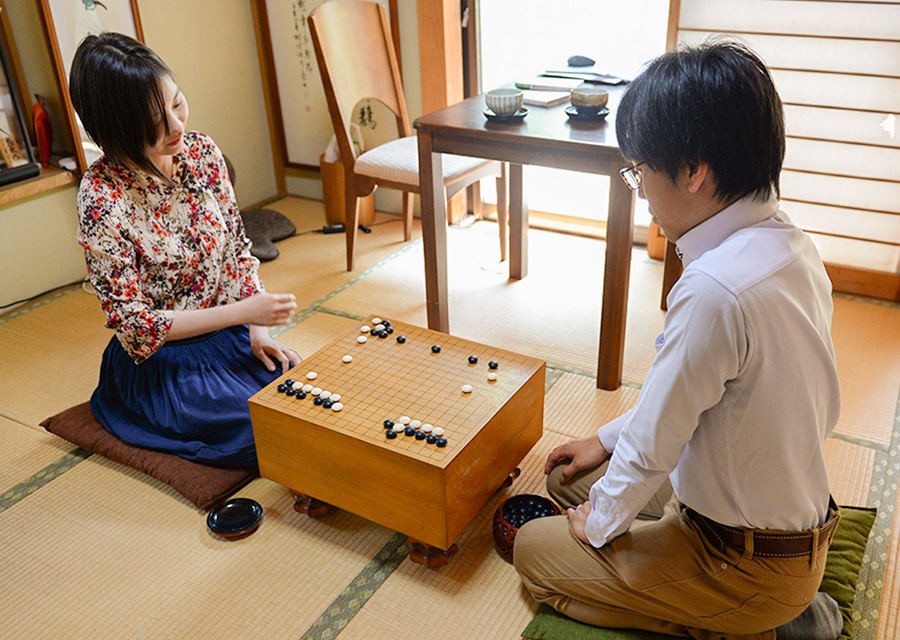
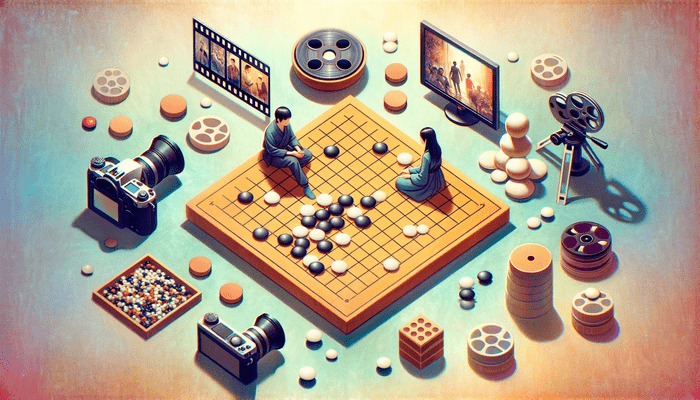

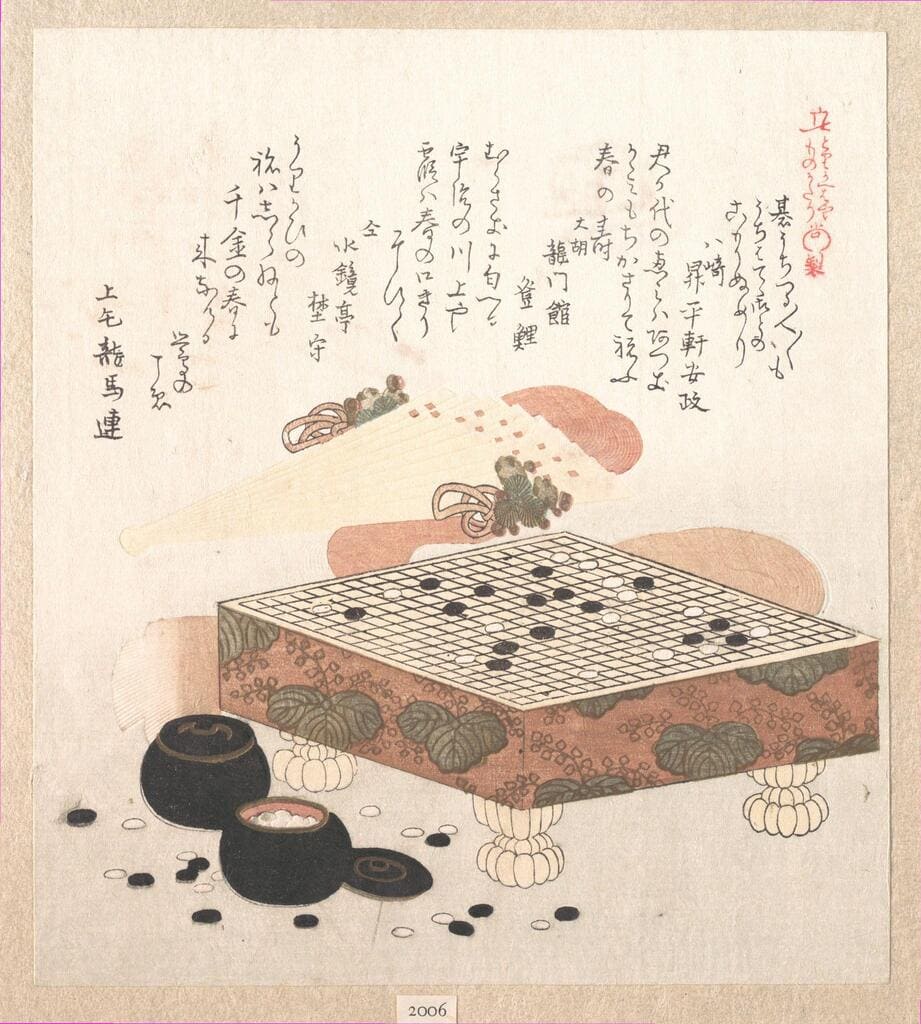
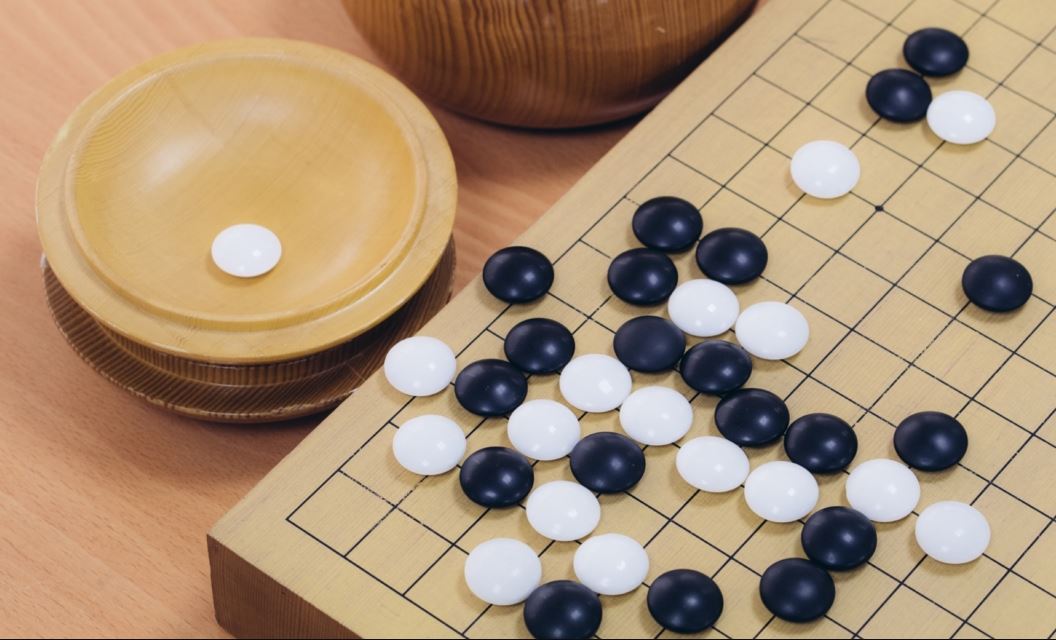
Leave a comment